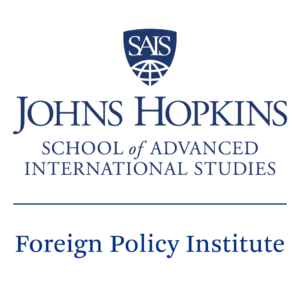
The World’s Top Ten Oil Producing Nations
By Zubin Eimen
As the world increasingly focuses on climate change as a vital global issue, fossil fuels have come under fire. These fuels – coal, natural gas, and petroleum – account for about 74% of greenhouse gas emissions in the world.
While fossil fuels are major greenhouse gas contributors, they have also been vital to our modern global economy. From the fuels that transport us, to the life-saving medicines that heal us, to the plastics used in everyday products, to the electricity that powers us, fossil fuels have become critical to our modern life. In fact, they account for 84% of the world’s energy.
The most widely used fossil fuel in the world today is petroleum (oil). Although initially discovered in ancient times, the oil industry did not take off until the start of The Machine Age in the early 20th century. Today, there are several global economic sectors that highly rely on oil, especially the transportation and electricity sectors, and it is the largest traded commodity in the world.
The oil industry has historically been dominated by three nations: The United States, Russia, and Saudi Arabia, which currently account for about 42 percent of the oil production in the world. Saudi Arabia is a member of The Organization of the Petroleum Exporting Countries (OPEC), which consists of 13 nations from the Middle East, Africa, and South America, with the rest of its members being significant oil contributors as well. Saudi Arabia and Russia have increasingly worked together over the past year to try to balance oil markets and forestall lower prices.
Over the past decade, the United States has risen to become the world’s largest producer of oil, thanks mostly to advances in exploration and production on shale oil and gas.
Here are the current Top Ten oil producing nations in the world:
Top Ten Largest Oil Producers in the World (2020)
| Country/Region | Production | Share of World Total |
| 1. United States | 19.51 million bpd | ~19% |
| 2. Saudi Arabia | 11.81 million bpd | ~12% |
| 3. Russia | 11.49 million bpd | ~11% |
| 4. Canada | 5.50 million bpd | ~5% |
| 5. China | 4.89 million bpd | ~5% |
| 6. Iraq | 4.74 million bpd | ~5% |
| 7. United Arab Emirates | 4.01 million bpd | ~4% |
| 8. Brazil | 3.67 million bpd | ~4% |
| 9. Iran | 3.19 million bpd | ~3% |
| 10. Kuwait | 2.94 million bpd | ~3% |
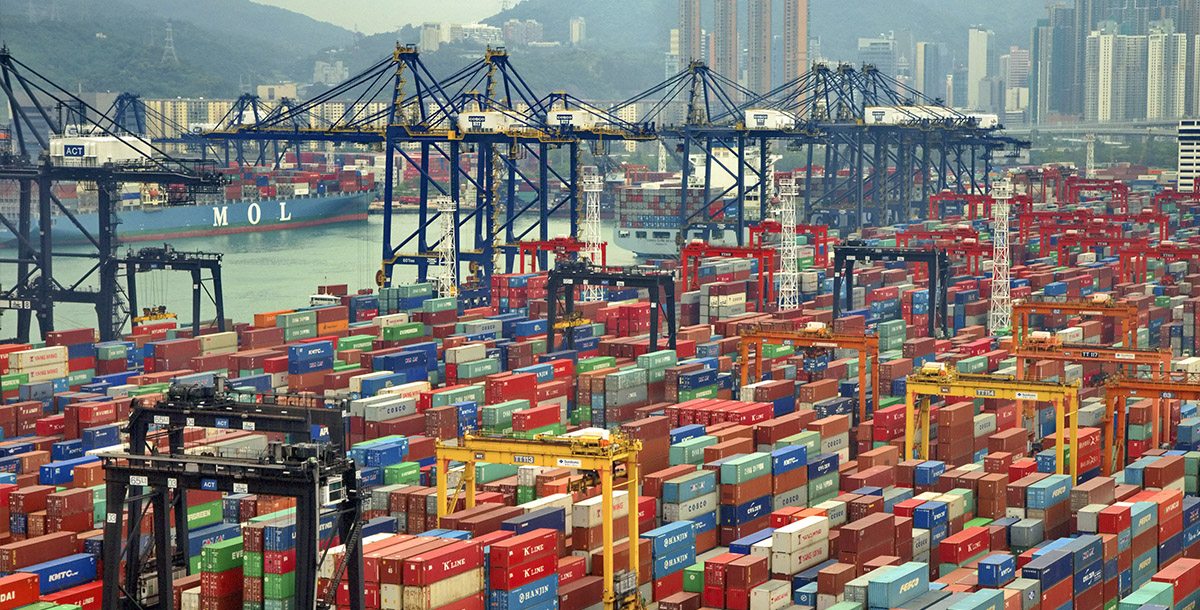
New Silk Road Monitor Daily – March 3
The Top 5 Stories Shaping the New Silk Road – March 3
Hyundai Heavy Industries Joins with Saudi Aramco on Hydrogen Project – “Hyundai Heavy Industries Holdings said Wednesday that it has signed a deal with Saudi Arabia’s state-run oil firm Saudi Aramco to cooperate on a hydrogen project. Under the deal, Hyundai Oilbank, HHIH’s refining unit, will import liquefied petroleum gas from Saudi Aramco to produce blue hydrogen, which is derived from fossil fuel resources such as natural gas, the holding company said.”
“Carbon dioxide captured and stored during the production process will also be provided to Saudi Aramco for the extraction of crude oil from exhausted oil fields. Hyundai Oilbank plans to sell blue hydrogen as fuel for vehicles and thermal power plants or to use it for desulfurization equipment, HHIH said. The refining unit also plans to set up 300 hydrogen charging stations by 2040 across South Korea.” The Korea Herald reports.
Chinese Firms Still Actively Hacking Indian Port, Report Says – “At least one connection opened by Chinese state-sponsored hackers into the network system of an Indian port is still active, even as authorities block attempts to penetrate the South Asian nation’s electrical sector, according to the U.S. firm that alerted officials.”
“As of Tuesday, Recorded Future could see a ‘handshake’ — indicating an exchange of traffic — between a China-linked group and an Indian maritime port, said Stuart Solomon, the firm’s chief operating officer. Recorded Future calls the group RedEcho and says it had targeted as many as 10 entities under India’s power grid as well as two maritime ports when the company first notified India’s Computer Emergency Response Team on Feb. 10. Most of these connections were still operational as recently as Feb. 28, Solomon said. ‘There’s still an active connection between the attacker and the attack,’ Solomon said, referring to the port. ‘It’s still happening.'”
“A spokesman for India’s Ministry of Electronics and Information Technology wasn’t immediately available for comment. “Without any proof, slandering a specific side is irresponsible behavior and an ill-intentioned one,” Chinese Foreign Ministry spokesman Wang Wenbin said in Beijing on Wednesday.” Bloomberg reports.
Iraq Receives First Vaccines as Gift from China – “Iraq on Tuesday received 50,000 Sinopharm vaccines donated by China, the health ministry announced, launching a long-awaited vaccination campaign.”
“Health ministry spokesman Seif Al-Badr told reporters that the first delivery in the early hours meant inoculations could begin.
‘The doses will be delivered to Baghdad’s three main hospitals, and maybe to some provinces,’ said Badr, who confirmed the jabs were donations. ‘We will start vaccinations today, Tuesday,’ he said.”
“The health ministry simultaneously announced it had agreed with the Chinese ambassador in Baghdad to purchase another two million doses, with no details on payment or timing.Sinopharm affiliate Wuhan Institute Of Biological Products says its vaccine has an efficacy rate of 72.51 percent, behind rival jabs by Pfizer-BioNTech and Moderna, which have 95 percent and 94.5 percent rates respectively,” Arab News reports.
Pakistan Urges Sri Lanka to Join China-Pakistan Economic Corridor, Sparking Concern in Delhi – “Pakistan’s offer to Sri Lanka to join its multibillion-dollar trade and infrastructure scheme with China under Beijing’s Belt and Road Initiative has raised concerns in Indian policy circles, as New Delhi seeks to secure its influence in a region where China’s presence is growing.”
“On a two-day visit to Colombo last week, Pakistani Prime Minister Imran Khan urged Colombo to participate in the China-Pakistan Economic Corridor, which comprises railways, power plants and the deepwater Indian Ocean port of Gwadar. The CPEC is aimed at offering China a major overland route from its western frontiers to the world but critics have accused it of being a debt trap for Islamabad. India has kept a close watch on the visit but has not commented on it.” South China Morning Post reports.
Morocco Top Arab Exporter to Brazil in January – “In January 2021, Morocco exported $100 million of goods to Brazil, making the country the top Arab exporter to the country. According to data from the Arab Brazilian Chamber of Commerce (ABCC), Morocco had the most sales, claimed Brazil.”
“Morocco’s exports to Brazil were up by 95.5%. Moroccan exports to Brazil with the most growth were fertilizers (118.3%), inorganic chemicals (137.9%), and seafood (44.2%). Morocco and Brazil share good trade cooperation. In 2020, Moroccan exports to Brazil reached $1.2 billion, making Brazil the third largest customer after France and Spain. Brazil’s trade with all Arab countries climbed by 17.3% in January compared to the previous year.” Morocco World News reports.
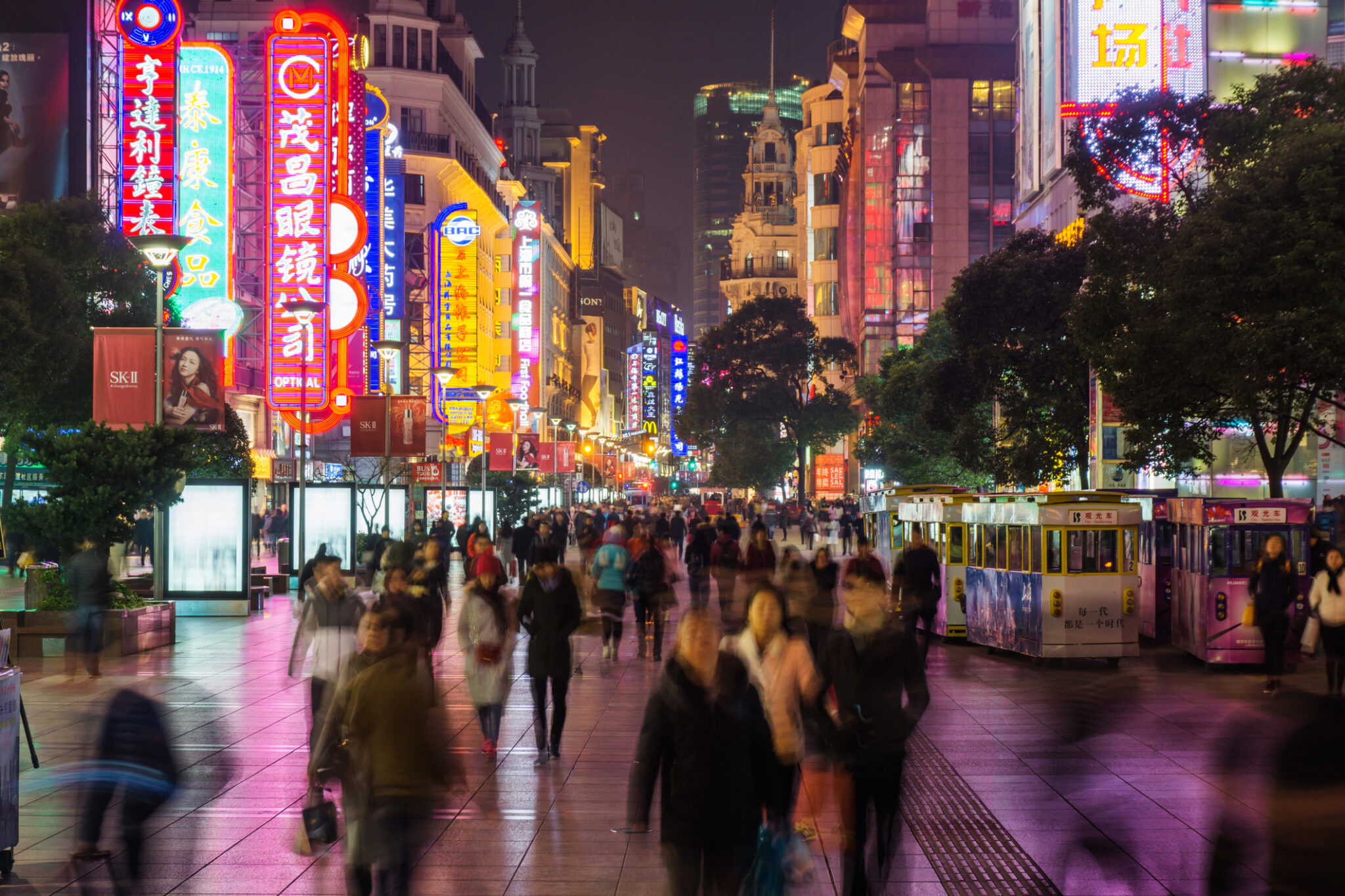
Emerging Markets Daily – January 29
The Top 5 Emerging Markets Stories – January 29
- GameStop Frenzy Spreads to Asia – Singapore Straits Times/Reuters
“Asia’s retail investors, emboldened by the meteoric rise of US videogame retailer GameStop, are taking on short sellers and making their brokers nervous enough to cut off margin lending.”
“In South Korea, small investors known as ‘ants’ have borrowed so much money to dabble in stocks that at least half a dozen brokerages have stopped offering them leverage.”
“GameStop’s global impact is the latest manifestation of a day-trading mania driven by amateur investors that is boosting the price of assets ranging from cryptocurrencies to new stock market listings,” Reuters/Singapore Straits Times report.
- Retail Investors Storm Kuaishou Technology IPO – Reuters
“China’s Kuaishou Technology raised $5.4 billion from its IPO, the top of the range, with offers from retail investors reaching a mammoth $162 billion, nearly half of it backed by margin loans, three people with knowledge of the matter said.”
“Combining retail and institutional demand, the offering saw total bids worth over $370 billion, more than the gross domestic product of Hong Kong, for the 8.9% of the online video site on offer. The shares were priced at HK$115 ($14.83), two of the sources said, making the company worth $60.9 billion.”
“The huge demand comes amid growing fears about an asset bubble, with amateur investors boosting the price of assets ranging from cryptocurrencies to new stock market listings.”
“Those concerns, triggered by a sharp surge in U.S. videogame retailer GameStop and a few other stocks, have led some brokerages globally to raise margin requirements or stop offering leverage for buying securities.”
“Retail investors bid for more than 1,200 times the amount of Kuaishou shares on offer for them as the book closed on Friday, said the sources, who declined to be named as the information had not yet been made public,” Reuters reports.
- EM Record Borrowing Sparks Debt Concerns – Wall Street Journal
“Developing economies borrowed at a blistering pace at the start of the year after a record 2020, prompting questions among investors about whether they are building up debt problems for the future.”
“Governments and companies in developing countries have sold close to $100 billion of bonds so far in January, using the cash to plug budget deficits and shield themselves from the economic impact of the coronavirus pandemic, according to data from Dealogic. In all of 2020, they borrowed $847 billion.”
“‘We’ve never seen a busier start, in terms of issuance year to date—by a large margin,’ said Stefan Weiler, a regional head of emerging-debt capital markets at JPMorgan. ‘From an issuer perspective, it’s hard to see market conditions improving.’” The Wall Street Journal reports.
- China Earnings Set for Strong Showing – Bloomberg
“Hundreds of Chinese companies are set to report an improvement in annual earnings, offering investors a stronger fundamental backdrop after stocks sank this week.”
“Among the 1,200-odd firms listed in mainland China that issued preliminary results in January, 75% have said earnings rose last year, according to data compiled by Bloomberg as of Thursday. Firms in the communication services and health care sectors are set to report the biggest growth, followed by consumer staples and technology. Listed companies have until Sunday to announce significant changes in earnings.”
“Evidence of China Inc.’s resilience to the slowest economic growth in four decades due to the coronavirus, capped by a stronger-than-expected fourth quarter, may offer relief to investors. The CSI 300 Index, which tracks some of the biggest firms in China, rose 0.5% Friday after a three-day, 4.4% decline which raised worries that a near-term peak has been reached. That lost momentum came as the central bank withdraws liquidity and a central bank adviser warned of asset bubbles,” Bloomberg reports.
- Saudi Stock Exchange Expects Record IPO Year – Bloomberg
“The Saudi stock exchange expects to host more initial public offerings than ever in 2021, seizing on strong demand from local investors that supported several deals last year.”
“After 22 issuances across different platforms in 2020, ‘I think we will break that record this year,’ Khalid Abdullah Al-Hussan, the chief executive officer of the Tadawul exchange, said in an interview on the sidelines of the Future Investment Initiative conference in Riyadh.”
“Four companies went public last year on the main market of the Saudi exchange, raising a combined $1.5 billion, according to data compiled by Bloomberg. That was more than the $1.3 billion worth of IPOs in Germany, though far behind the listing of oil giant Saudi Aramco in 2019.”
“‘We have a very very healthy pipeline in all our platforms, and there is a good focus on Nomu and the main market,’ Al-Hussan said, referring to the parallel market for smaller listings in Riyadh. ‘So we see a good pipeline — even better than 2020,’” Bloomberg reports.
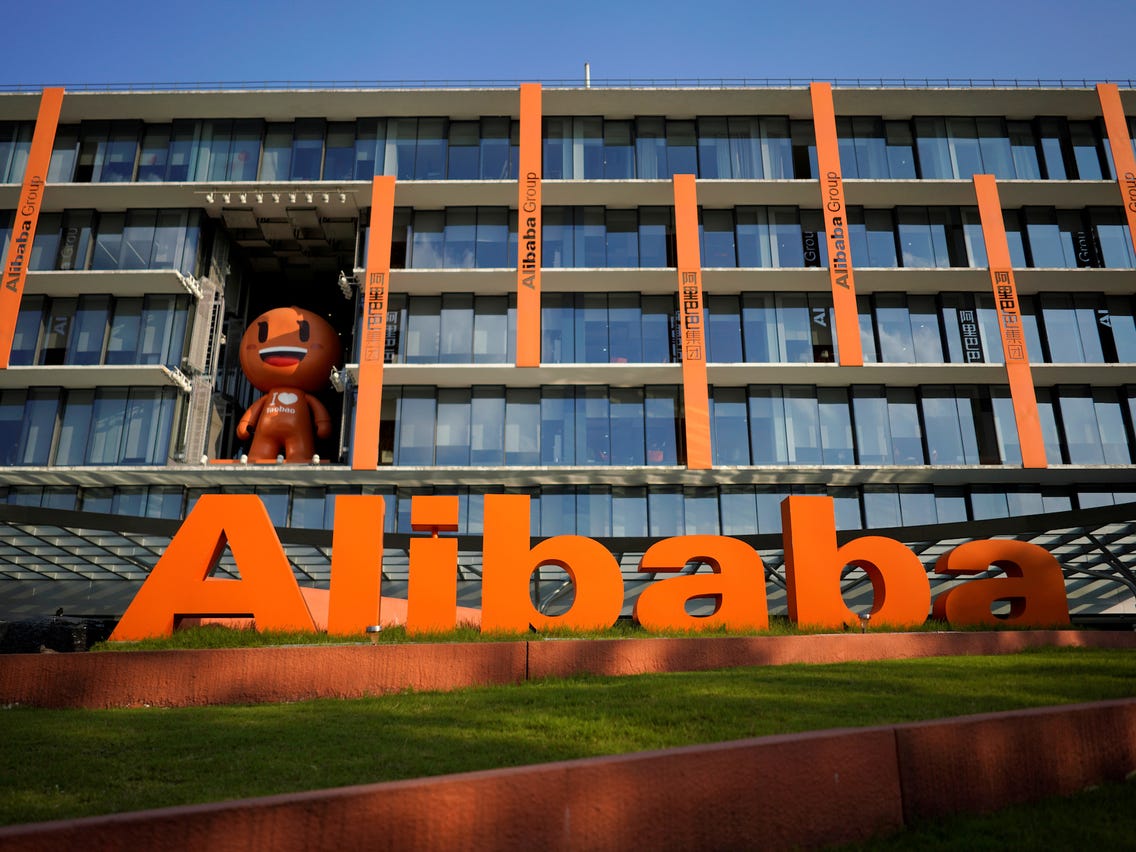
Emerging Markets Daily
The EM 5 – The 5 Stories You Need to Read Today on Emerging Markets
1. Alibaba’s “Existential Crisis” (BABA)
“This year could be the most consequential for Alibaba since it was founded two decades ago. China’s most famous tech company faces a host of challenges at home and abroad that risk fundamentally changing it forever. Chinese authorities are investigating the company on antitrust grounds as part of a growing crackdown on the tech industry, while also pushing its sprawling financial affiliate, Ant Group, to overhaul its business,” CNN reports.
2. Is it Time to Buy Beleaguered Luckin Coffee? (LKNCY)
“When it peaked at the start of 2020, Luckin Coffee (LKNCY) traded as high as $50.02. Today Luckin stock trades around $10. A lot has changed in the last year, but a comeback could be on the horizon,” writes Chris Lau via Yahoo Finance.
3. Taiwan Semiconductor Spending Blitz Spurs Chip Rally (TSMC)
“Taiwan Semiconductor Manufacturing Co. triggered a global chip stock rally after outlining plans to pour as much as $28 billion into capital spending this year, a staggering sum aimed at expanding its technological lead and constructing a plant in Arizona to serve key American customers. The envisioned spending spree sent chipmaking gear manufacturers surging from New York to Tokyo. Capital spending for 2021 is targeted at $25 billion to $28 billion, compared with $17.2 billion the previous year. About 80% of the outlay will be devoted to advanced processor technologies, suggesting TSMC anticipates a surge in business for cutting-edge chipmaking. Analysts expect Intel Corp., the world’s best-known chipmaker, to outsource manufacture to the likes of TSMC after a series of inhouse technology slip-ups,” Bloomberg reports,
4. The Next Wave of Korean FinTech IPOs
“Last year was a historic year for initial public offerings (IPOs). While 2021 is shaping up to be no less exciting especially for fintechs, Kakao Bank and Toss are considered as some of the top IPO candidates that deserve a closer look. The COVID-19 pandemic was the primary reason for the stellar IPOs of some fintech companies last year. The pandemic triggered a major shift in consumers’ financial services preferences to digital applications, which ended up boosting the appeal of fintechs to big investors. These developments have paved the way for more IPOs on the horizon,” Korea Times reports.
5. Reliance Industries Stores Hit by Farmer Protests
“Dozens of Reliance Industries’ retail stores and a giant Walmart outlet face revenue losses of millions of dollars after being forced to shut for more than three months over protests against India’s new farm laws, sources said. Thousands of farmers from states including northern Punjab have camped for weeks on the outskirts of the capital, in a bid to force Prime Minister Narendra Modi to repeal the laws they contend will benefit corporates, rather than cultivators,” Business Standard of India reports.
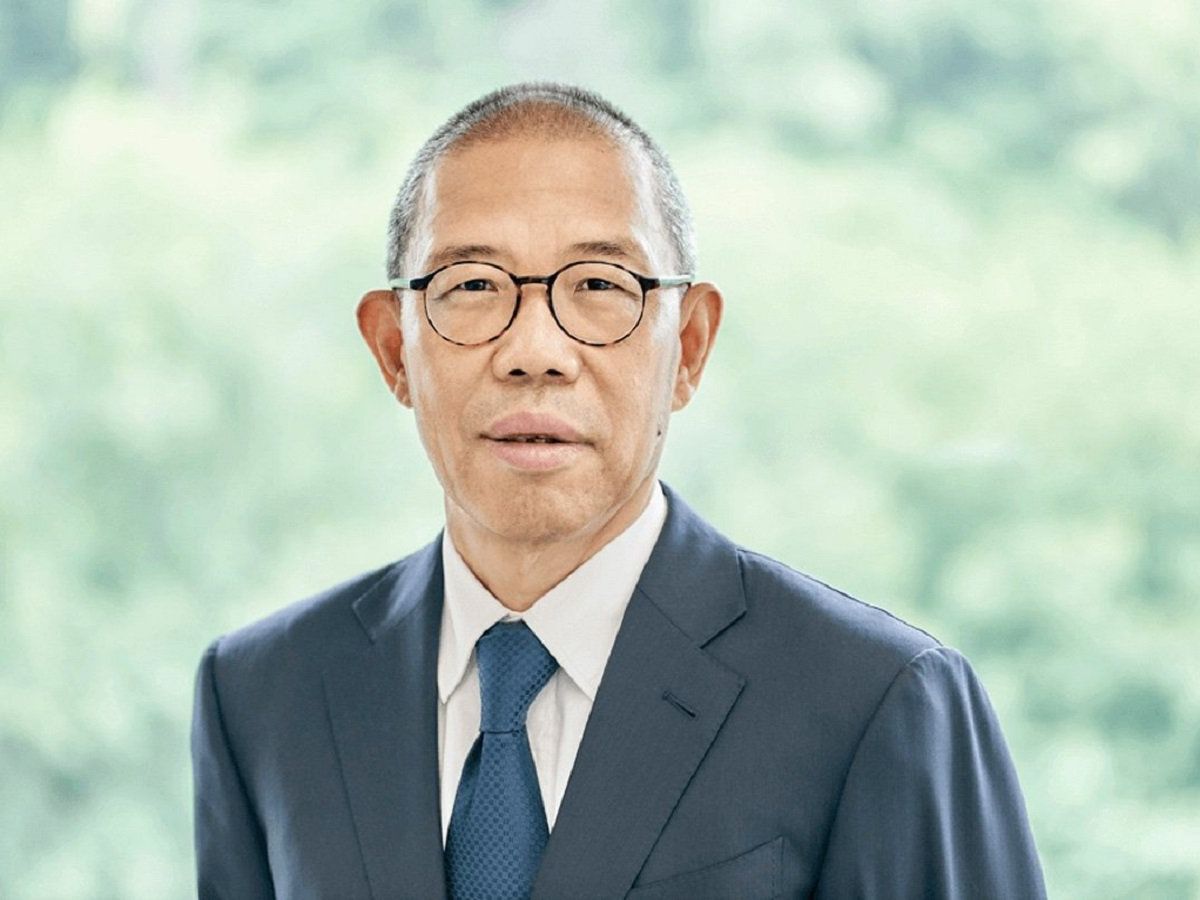
China’s Bottled Water King Now Asia’s Richest Man
From Shenzhen Daily
“ZHONG SHANSHAN is a private billionaire who’s rarely quoted in the press.
Now, after an improbable career spanning journalism, mushroom farming and health care, he’s become Asia’s richest person, eclipsing India’s Mukesh Ambani and a group of Chinese tech titans.
Zhong’s net worth surged US$70.9 billion last year to US$77.8 billion, making him the 11th-richest person on the planet, according to the Bloomberg Billionaires Index.
Zhong’s business interests aren’t entwined with other rich families such as the property tycoons, which is why he’s known locally as the “Lone Wolf.”
He owes his success to two unrelated fields. He took vaccine maker Beijing Wantai Biological Pharmacy Enterprise Co. public in April, then months later Nongfu Spring Co., a maker of bottled water, became one of Hong Kong’s hottest listings. Nongfu shares have jumped 155 percent since their debut, and Wantai’s are up more than 2000 percent. (SD-Agencies)”
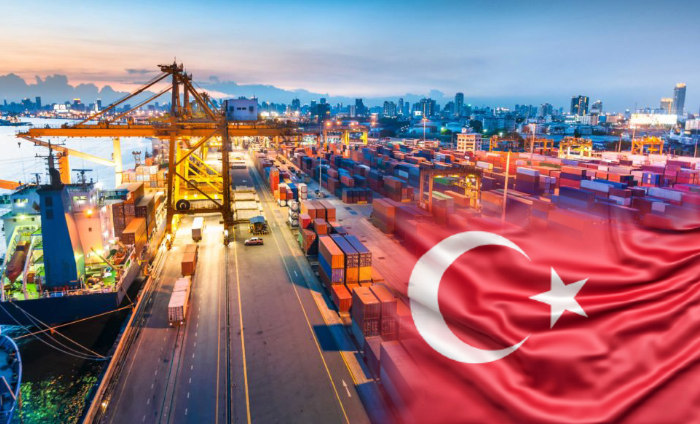
Turkey Secures Vital UK Market With Free Trade Deal
The United Kingdom and Turkey signed a free trade agreement that took effect on January 1 – the day that the UK formally departed the European Union. The deal will protect existing preferential tariff rates for both sides in a trade relationship exceeding $20 billion. The deal is particularly important for Turkey given its significant exports to the United Kingdom – its second largest export destination. All told, Turkey exported some $11.2 billion worth of goods to the UK.
Here are Turkey’s top 5 export destinations (2019), according to an examination of IMF figures
- Germany – $16.6 Billion
- United Kingdom – $11.2 Billion
- Iraq – $10.2 Billion
- Italy – $9.7 Billion
- United States – $8.9 Billion
As for the UK, Turkey is also an important export destination, though much lower in rankings of overall exports. The UK’s total exports of $6.41 billion to Turkey rank it in the top twenty, though far from the top five.
Here are the United Kingdom’s top 5 export destinations
- United States – $72.8 Billion
- Germany – $46.5 Billion
- France – $31.2 Billion
- Netherlands – $30.5 Billion
- China – $30.1 Billion
18. Turkey – $6.4 Billion
China’s Growing Influence Across the Middle East and North Africa
From Rabat to Riyadh, and from Alexandria to Abu Dhabi, China has emerged as a major geo-economic player in the Middle East and North Africa region, and the money trail gives us clues to Beijing’s broader thinking on the region.
I was delighted to work with the Hoover Institution of Stanford University, who published this paper I wrote. You can find a link to the paper on Hoover’s site here, or you can go directly to the PDF of the paper here.
In the paper, through charts and text, I highlight the following
-
The 1993 Inflection Point
-
The $20 Billion-Plus Club
-
Where is China Investing and Winning Contracts?
-
The Crude Truth: Regional Export Dependence on China
-
A Comparison of MENA Exports to China vs Exports to the US
-
The Free-Rider Issue
-
Saudi-China Ties
-
GCC Diplomatic Contacts with China
-
China’s Top Ten Oil Suppliers in 2020
-
President Xi and the 1+2+3 Strategy
-
The UAE Trade Hub
-
Qatari Gas
-
Egypt and Oman Debts Rising
-
China’s Iran Strategy
-
The Future of China in MENA

Emerging Markets Monitor Weekly – October 25
By Afshin Molavi
At the nexus of geopolitics and markets in the emerging world
Our lead story this week is China’e economy: Is the recovery real, and what does it mean for the global economy?
We also look at protests rocking Nigeria, the #MilkTeaAlliance between Hong Kong and Thai protestors, and the storm in India over Bangladesh surpassing the South Asian giant in per capita GDP.
- Is China’s Economic Recovery Real?
Official Chinese statistics note that GDP expanded by 4.9% in the third quarter, “putting China back toward its precoronavirus trajectory,” as the Wall Street Journal reports. The IMF says China’s economy is set to expand by 1.9% in 2020, the only major global economy that will see an expansion in a world with balance sheets bleeding red. China benefits from being, in a sense, first in and first out of the coronavirus pandemic, and both factory production and consumption are up sharply.
Most reports from China suggest that the recovery has been driven first by a recovery in factory output in the second quarter as Beijing ramped up its industrial machine to deliver a wide range of goods demanded by the global economy, from medical equipment to hand sanitizers and home office equipment, followed by a consumer recovery in the third quarter as more Chinese ventured out of varying degrees of lockdown. This consumer recovery, in many ways, tells a more important story than China’s official numbers — long a source of (justifiable) skepticism.
It’s hard to quibble, however, with what Western and other multinationals are saying: China is back. U.S-based Domino’s Pizza had a very strong quarter in China, with CEO Richard Allison calling it “a terrific success story in 2020,” as quoted in the Wall Street Journal. “While we’ve had some slowdown in some of our markets around the world, China is definitely not one of them,” he added.
Domino’s Pizza is not alone. Other companies that have reported strong consumer demand in China include the global sports brand Nike, the luxury goods brand LVMH Moet Hennessy Louis Vuitton SE, the US-based carmaker General Motors, the athletic clothing company Lulu Lemon, the spice and condiment maker McCormick and Co, and the German carmaker Daimler. All of this likely means that companies like Walmart Inc, with ambitious growth plans across China, will steam ahead as planned, including quadrupling its Sam’s Club chain of stores over the next eight years from 100 today, and growing its already existing 400 Walmart stores that sell groceries. And Tesla announced – in a statement via Tencent’s WeChat messaging service — that it will begin exporting Model 3 cars made in its Shanghai factory to Europe beginning this month.
In addition to US and international consumer companies reporting robust sales and production news from China, stock exchanges in Shanghai and Shenzhen have been on an initial public offering (IPO) hot streak. So far this year, they have hosted more than $47.5 billion in offerings, a 27% of global IPO totals, the Wall Street Journal reported. This IPO pipeline will grow even more dramatically when Alibaba’s financial services arm, Ant Group Co, issues its own offering, set to be among the biggest the world has ever seen.
The Numbers: Shanghai Stock Exchange Composite Index YTD growth: +8.6%
2. #TheMilkTeaAlliance and Thailand’s Protest Movement
If you follow Southeast Asian politics on Twitter, you would have seen a curious hashtag around Thailand’s protest movement challenging the rule of former general and head of the ruling junta and current Prime Minister Prayut Chan-o-cha and the Thai monarchy. It’s known as #TheMilkTeaAlliance, a loose grouping of pro-democracy activists in Hong Kong, Taiwan, and Thailand, who borrowed a unifying cultural force — their mutual love of milk tea — to unite them around a unifying political force: their desire for greater democracy, freedom, and human rights.
It’s catchy slogan for an important movement. I remember that feeling of buzz I first got when I gulped my first taste of Hong Kong Milk Tea a few years ago — a bright, robust tea mingled with sweet condensed milk. Different versions of milk tea are also popular in Thailand, Taiwan, and other parts of the world. In fact, I would argue that you could create a “Milk Tea Region” investing strategy that would span from South Asia to the Arabian peninsula to parts of Southeast and East Asia – some of the fastest growing economies in the world.
To learn more about the #TheMilkTeaAlliance, you can check out this useful explainer video by DW News.
Thailand’s protests have certainly rocked the country and stocks have hit six month lows this week, while the country’s equities have been among the worst performers in Asia. Reuters reports that the country has seen record equity outflows this year, and the protestors are taking a page out of the Hong Kong protestors playbook, following the “Be Water” mantra and fluidly moving in and out of police view.
Reuters has a good round-up of what’s happening in markets.
The Numbers: Stock Exchange of Thailand SET Index YTD Return: -23.8%
Via Reuters:
Asia stock indexes and currencies at 0655 GMT 22 October
COUNTRY FX RIC FX DAILY % FX YTD % INDEX STOCKS DAILY % STOCKS YTD %
Japan -0.02 +3.85 -0.70 -0.77
China -0.21 +4.49 -0.35 8.63
India -0.05 -3.05 -0.34 -2.23
Indonesia -0.27 -5.26 -0.26 -19.31
Malaysia -0.14 -1.40 -0.03 -6.09
Philippines -0.08 +4.33 1.05 -18.82
S.Korea -0.09 +2.07 -0.67 7.16
Singapore -0.15 -0.86 -0.03 -21.66
Taiwan +0.88 +5.12 0.31 7.67
Thailand -0.29 -4.32 0.44 -22.66
Bottom line: The protesters aim to be fluid, but so is the situation and the protests may slow, but will reappear over the next few months. Thailand is set for a rocky ride the rest of the year and into the next.
3. Nigeria protests
Nigerians have seemingly had enough with police brutality — and their grievances seem to be growing. In protests that erupted in Lagos on October 5 and have spread to almost half of the country’s 36 states, Nigerians have been calling for a disbanding of a special police force unit widely believed to be involved in corruption, torture, and extrajudicial killings. Their protest demands have grown wider, calling out Nigerian leaders for widely perceived corruption and mismanagement that is seen as fueling the country’s rapid economic decline, including a whopping 55% rate of unemployed and underemployed.
At least 56 people have been killed in the protests. These three pieces, in Bloomberg, Quartz Africa, and African Business offer a good round-up of the story.
From a Reuters story:
“The unrest, unprecedented since the 1999 return to civilian rule, is the most serious political crisis confronting President Muhammadu Buhari, a former military ruler elected in 2015. Curfews have been imposed on millions of people in recent days in response to violence and looting in parts of the country.
Violence, particularly in the commercial capital Lagos, escalated after demonstrators were shot on Tuesday night in the city’s Lekki district during a round-the-clock curfew.”
The Numbers: The Nigerian Stock Exchange All Share Index YTD Return: +6.41%
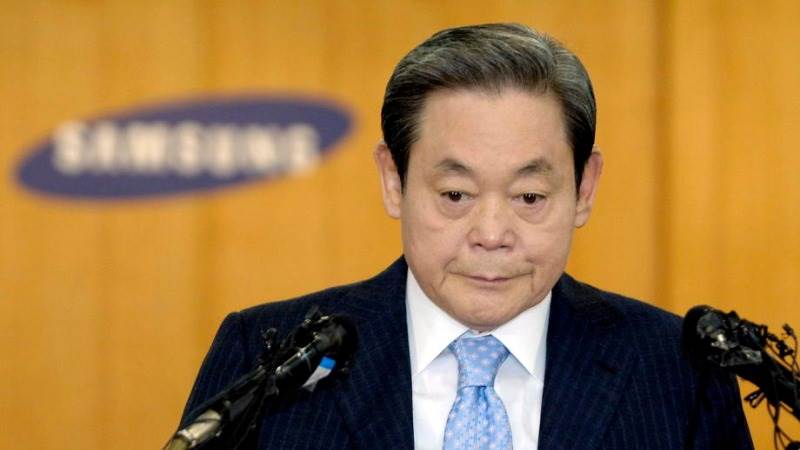
Legendary Samsung Chairman Dies, Leaving Legacy of Innovation
By Afshin Molavi
“Change everything, except your wife and children.” Those words by Samsung Chairman Lee Kun-hee, uttered in 1993 at a low point in the company’s history, have become enshrined in the lore of the South Korean conglomerate that has become a global icon and one of the world’s leading smartphone players. Over the next two decades and a half, the “change everything” mantra came to represent a relentless drive for innovation, driving Samsung to the top ranks of consumer technology companies, infrastructure, and construction companies. It was a long road from the small trading company founded in 1938 by Lee’s father. At his death, Lee Kun-hee was South Korea’s richest person, with an estimated net worth exceeding $20 billion.
This story from TechCrunch offers a good round-up of the legacy of Samsung and Lee Kun-hee. An excerpt below
The story of Samsung is deeply intertwined with the history of its home country, which is sometimes dubbed “The Republic of Samsung.” Lee, the son of Samsung founder Lee Byung-chul, came to power in the late 1980s just as South Korea transitioned from dictatorship to democracy with the political handover from military strongman Chun Doo-hwan to Roh Tae-woo. Under his management, Samsung spearheaded initiatives across a number of areas in electronics, including semiconductors, memory chips, displays, and other components that are the backbone of today’s digital devices.
Lee navigated the challenging economic troubles of the 1990s, including the 1998 Asian financial crisis, which saw a near collapse of the economies of South Korea and several other so-called Asian Tigers, as well as the Dot-Com bubble, which saw the collapse of internet stocks globally.
Coming out of those challenging years, Lee invested in and is probably most famous today for building up the conglomerate’s Galaxy consumer smartphone line, which evolved Samsung from an industrial powerhouse to a worldwide consumer brand. Samsung Electronics, which is just one of a spider web of Samsung companies, is today worth approximately $350 billion, making it among the most valuable companies in the world.
For the full story, see here
And for a round-up of stories in the Korean media, head over to the New Silk Road Monitor Newspaper Room, and scroll down to the Korea section.
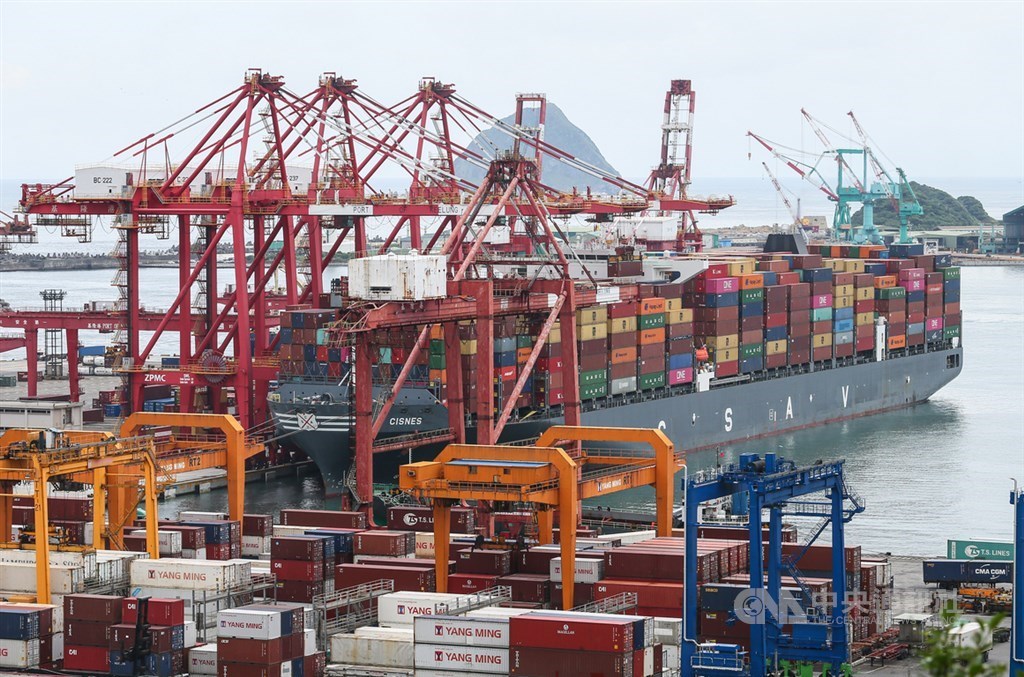
Despite Tensions, Mainland China Vital to Taiwan’s Exporters
By Yukai Jiao
Nearly six decades ago, in the year 1964, the New York Times ran a story with a simple headline: “Taiwan Success Story.”
Even as far back as the early 1960s, Taiwan was widely acknowledged as a rising economic star in Asia, and eventually emerged as one of Asia’s four “Economic Tigers” — including Hong Kong, Singapore, and South Korea – that made waves throughout the 1970s and 80s as major exporters and thriving economies.
Taiwan, like the other Asian tigers, was highly dependent on exports, and today it is a major producer of semiconductors, machinery, plastics, and medical apparatus. In fact, electrical machinery accounts for nearly half of all those goods.
Like many of the early Asian tigers, the bulk of Taiwan’s exports went to the Western world, chiefly the United States, but also Japan. However, with the rise of mainland China from the early 1980s to today as a major locus of the global economy (and global demand for goods), Taiwan’s exports have gradually followed that shift.
Today, Taiwan exports more than $90 billion worth of goods to mainland China – more than double its exports to the United States. China accounts for nearly 28% of all of Taiwan’s exports. When we add Hong Kong to the mix, it accounts for more than 40% of Taiwan’s exports. Despite political tensions that often plague Taiwan’s relations with mainland China, one thing remains clear: China is a vital market for Taiwanese goods.
Here are the Top Ten export markets for Taiwanese goods.
Taiwan – Top Ten Exports to Country/Region – 2019
| Country/Region | Exports |
| 1.China (Mainland) | $91.9 billion (27.9% of Taiwan’s total exports) |
| 2.United States | $46.3 billion (14.1%) |
| 3.China (Hong Kong) | $40.4 billion (12.3%) |
| 4.Japan | $23.3 billion (7.1%) |
| 5.Singapore | $18.2 billion (5.5%) |
| 6.South Korea | $16.9 billion (5.1%) |
| 7.Vietnam | $10.8 billion (3.3%) |
| 8.Malaysia | $9.4 billion (2.9%) |
| 9.Germany | $6.5 billion (2%) |
| 10.Philippines | $6.2 billion (1.9%) |
